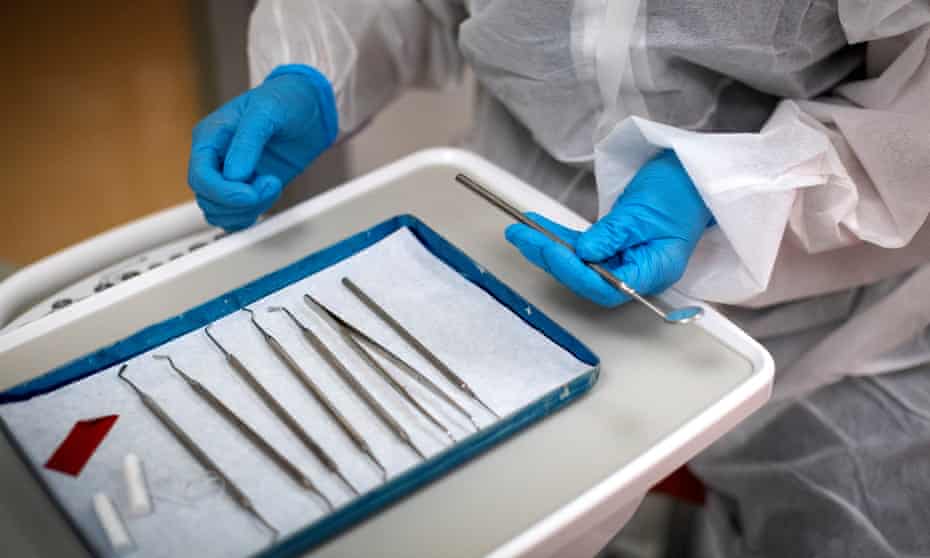Compulsory Covid jabs ‘calamitous’ for dental services in England, says BDA
Thousands of dental staff will quit with ‘devastating consequences’ for patients, says dentists’ association

Dentists’ leaders have said mandatory jabs for healthcare staff will have a “calamitous” impact on dental services in England, as a survey revealed that one in 10 dentists have not been double-vaccinated.
MPs voted this week to approve regulations requiring NHS and social care staff to be vaccinated by April next year. All frontline health and care staff must be fully jabbed with two Covid-19 vaccines before 1 April or risk losing their jobs.
But the British Dental Association (BDA) said compulsory vaccination risked “dropping a bomb on a service already stretched to breaking point” because it meant that thousands of dental workers would quit. The mass exodus would have devastating consequences for millions of patients, it said.
The stark warning comes after a survey of high street dentists by the BDA found that 9% had not had a single dose of a coronavirus vaccine. The poll found a further 1% had only had one jab.
The survey of 1,642 dentists in England conducted this month found 10% had received two doses, while 78% had a booster. The remaining 2% of dentists declined to reveal their vaccination status.
Fewer than half (48.4%) of dentists estimated all nurses operating in their practices were fully vaccinated, with 58% saying the same for hygienists, according to the survey.
“Dentists have supported the vaccine rollout, with many downing drills to play their part, but this is a road ministers must not go down. Dental services are already operating to a gold standard on safety. This mandate is a blunt instrument, which will have devastating consequences for millions of patients across this country.”
Dental patients are already struggling to access care and some have been told they may need to wait years for an appointment. In some parts of the country, patients have taken matters into their own hands as they struggle to access dental care, with reports of patients pulling out their own teeth while others have used DIY filling kits.
source: https://www.theguardian.com/society/2021/dec/17/compulsory-covid-jabs-dentists-in-england-dropping-a-bomb-on-service?fbclid=IwAR3uo53Rxg21-ruzsj5pQ-cDb-Qn2wL-CAbsMwWO027IPILeNJILV36KIS
Comments
Post a Comment